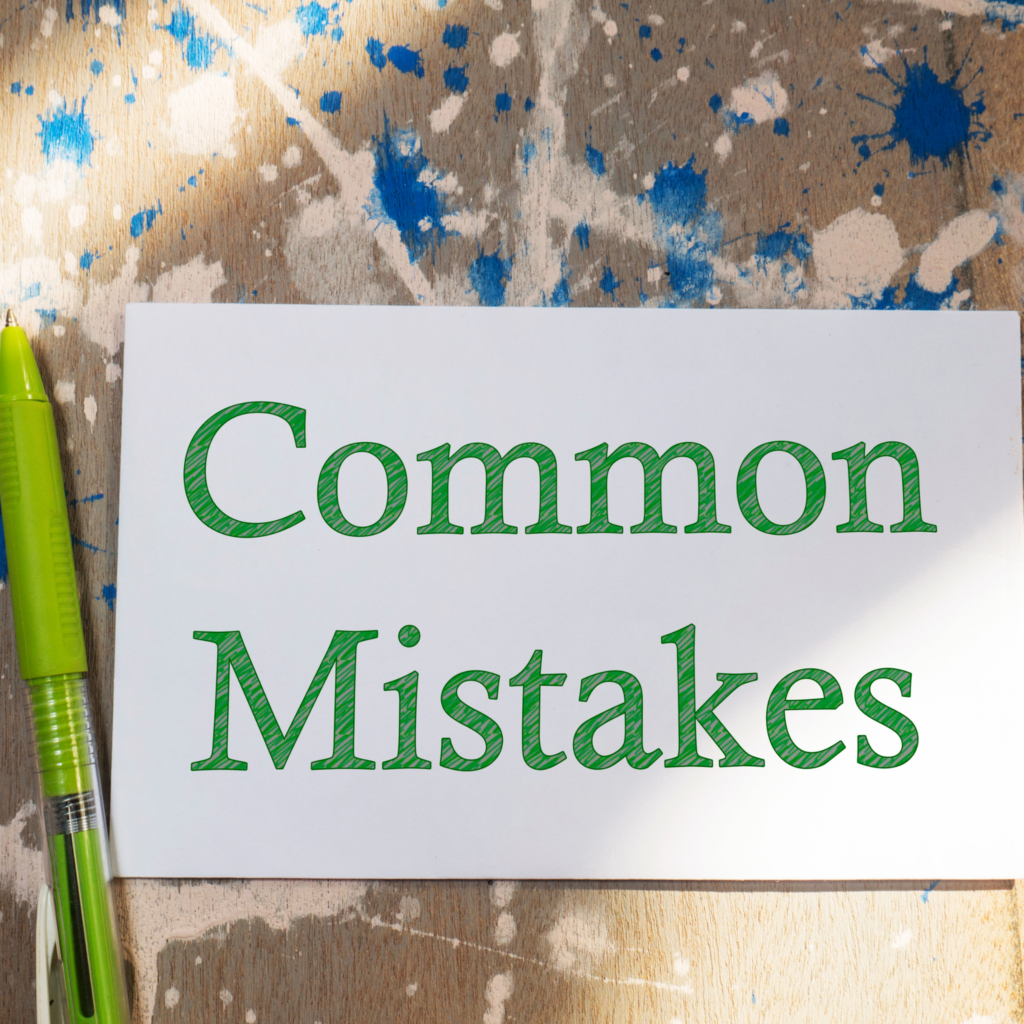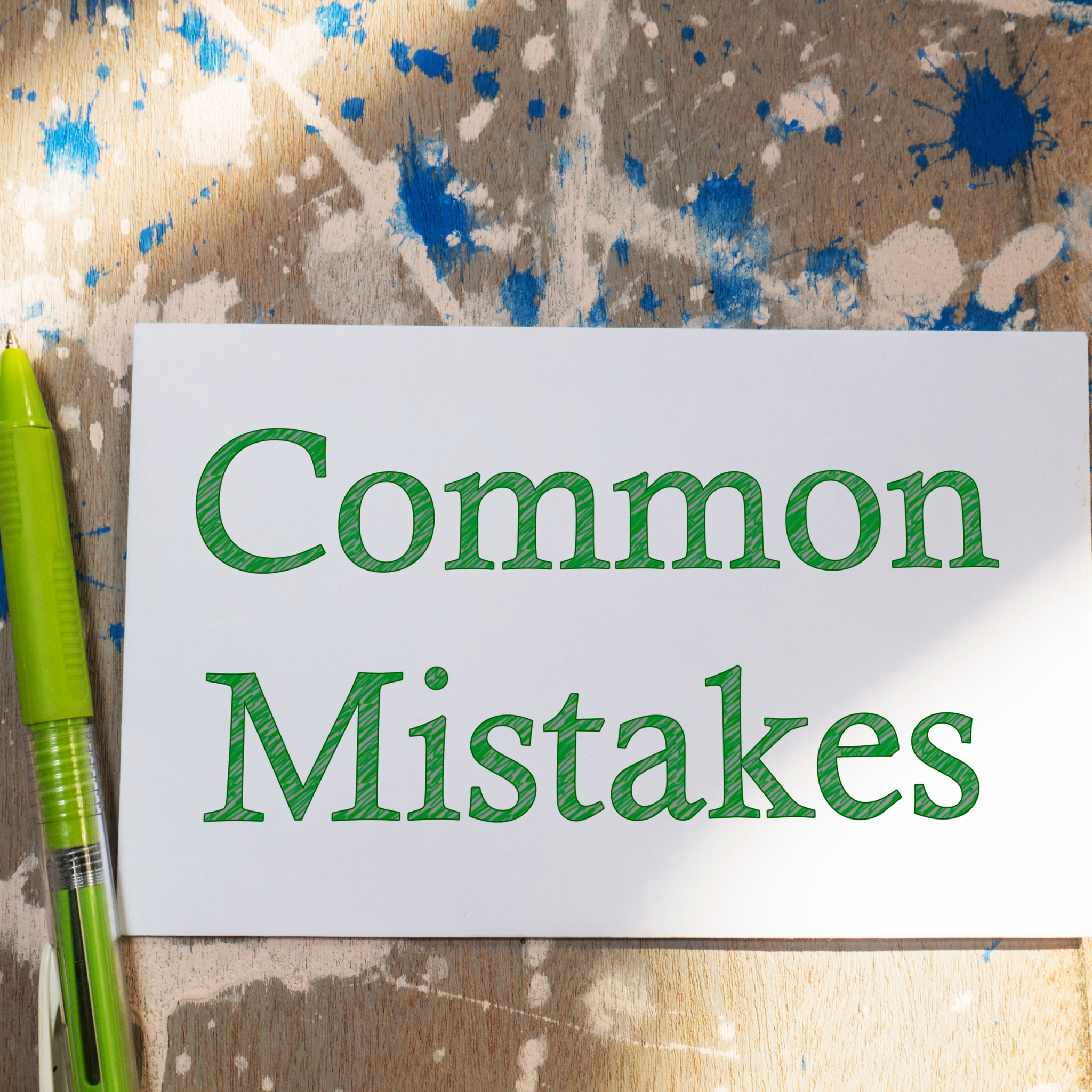Common Exterior Painting Mistakes: Giving your home’s exterior a fresh coat of paint seems easy. Just grab a brush and start painting – what could go wrong? Well, a lot! Your DIY painting project can quickly become messy if you’re not careful.
As a professional painting contractor, Link Solutions Painting Company has seen it happen repeatedly. Homeowners in the Middlesex and MetroWest areas have the best intentions but make simple mistakes that ruin the paint job. The exterior looks blotchy and amateurish; worse, the paint starts peeling off in sheets shortly after finishing.
Don’t let this happen to you! Avoid common pitfalls and get your exterior paint job done right first. Here are the top mistakes homeowners make when painting the outside of their homes. Learn what NOT to do on your next exterior painting project.

Failing to Prepare the Surface Properly
This is the first thing to avoid. Often, homeowners don’t take time to repair damaged areas or try to skip critical steps like washing the exterior and sanding glossy surfaces. Prepping the walls can feel tedious, but it’s crucial for getting that smooth, lasting finish.
Here are some prep steps you can’t afford to skip:
- Fix any damaged wood, cracks, holes, and peeling paint areas. Otherwise, you’re just painting over problems that will quickly resurface.
- Give the walls a good wash with an exterior cleaning solution, not just a quick rinse with the hose. A deep clean removes chalky residue, dirt, mildew, and other gunk that keeps paint from adhering.
- Sand all glossy surfaces to rough them up so the new paint can grab on. Otherwise, it will just peel right off.
Yes, proper prep takes time upfront. But it gives you the best shot at getting years of beauty from your exterior paint.
Common Exterior Painting Mistakes: Choosing the Wrong Type of Paint
Another big issue to avoid is using interior paint or cheap exterior paint. Always select a high-quality exterior paint formulated to withstand sun exposure, moisture, and temperature swings. If cost is an issue, ask your local paint retailer about more affordable lines from reputable brands. Or consider a one-coat paint that provides good coverage at a value price.
Just make sure the label specifically says it’s designed for exterior use. Interior paints don’t have the weather-proofing additives to hold up on your home’s exterior walls and trim.
Common Exterior Painting Mistakes: Forgetting the Primer
Primer might seem like an unnecessary extra step, but it’s necessary for a paint job. Primer helps the new paint adhere tightly and evenly to the surface. This is especially critical if you’re painting over glossy or slick surfaces. When done right, priming leads to a smooth, consistent finish.
So do your future self a favor – prime first before applying your finished paint. You’ll appreciate the surface later when your exterior paint retains that new look year after year.
Rushing Through the Job
Painting the exterior of a home is labor-intensive work. However, it seems tempting to cut corners to get it done faster. But speed leads to sloppy results. And you can end up with drips, thin spots, brush marks, and uneven coverage.
So, have patience and take your time when painting. Use long, smooth strokes and maintain a steady pace. Pay close attention to edges and corners. It’s worth a few extra hours to get things done right. You want the end product to look like a professional painter did the work, not a rushed DIY-er.
Common Exterior Painting Mistakes: Painting in the Wrong Conditions
Ideally, exterior painting should be done when temperatures are between 50-90°F. In this case, humidity is low, and the walls are in the shade. Paint applied in direct sun, excessive heat, or moisture can dry too fast. This causes brush marks, bubbles, and other imperfections.
Check the weather forecast and time your painting for optimal conditions. If needed, set up tarps or tents to shade the walls. Avoid painting late in the day when dew can form on surfaces. And never paint right after (or even during) rain. Just a little planning goes a long way toward a flawless finish.
Forgetting Masking and Prep
It’s messy painting the exterior walls while trying not to splatter the windows, doors, brick, and roofing. Save yourself cleanup hassles by covering areas vulnerable to paint splatters. Use plastic sheeting secured with painter’s tape to cover windows and plants. Tape off trim work—lay drop cloths below your work area.
Taking time on prep work keeps things neater. It also ensures your fresh paint job has crisp, defined edges instead of messy overlapping.
Improper Cleanup
Finally, many DIY-ers don’t thoroughly clean up after they finish painting. Any paint splatters or spills on surfaces like siding, brick, concrete, or wood must be promptly cleaned while wet. Once dried, such stains can be tricky (if not impossible) to remove.
Keep some rags and cleaning solvents on hand to quickly wipe up drips and splatters right after they happen. Give the entire area a final inspection and touch-up once the painting is done. Proper cleanup leaves everything looking professional.
#1 Trusted Painting Service
There you have it – the top mistakes to avoid on your next exterior painting project. I know it’s tempting to cut corners to save time and money when tackling DIY home improvements. But don’t let your paint job become a victim.
Get your exterior painted right the first time by taking your time, using proper techniques and materials, and avoiding common mistakes. Contact Link Solutions Painting Company for professional painting in MetroWest Boston if it all seems too daunting. Our experienced exterior painters get the prep work, details, and cleanup right so your home always looks its best. Contact us for a free estimate!


